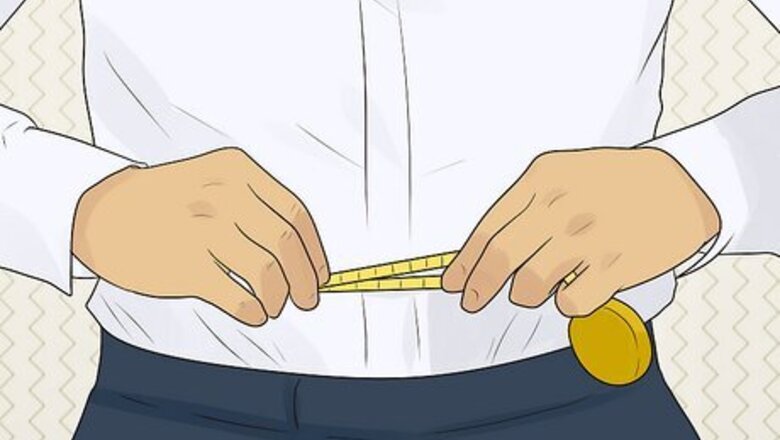
views
Measuring for Men's Pants
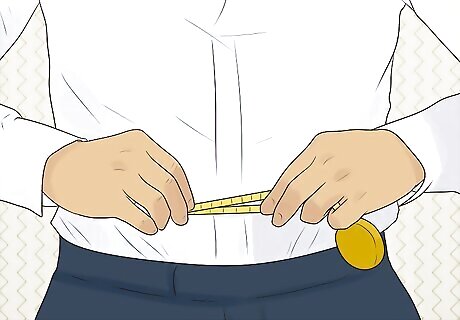
Measure around your natural waist. Wrap a soft measuring tape around your waist, which should be around your bellybutton. Don't wrap too tight. Try putting a finger between your body and the measuring tape to get a more comfortable fit. You can buy a tailor's measuring tape at fabric stores, convenience stores, or department stores. If your measurement is in between two sizes, round up. For example, if you measure 34.5 inches, round up to 35 inches. For sizes measured in centimeters, round up to the nearest even number. For example, if you measure 51 cm, round up to 52 cm.
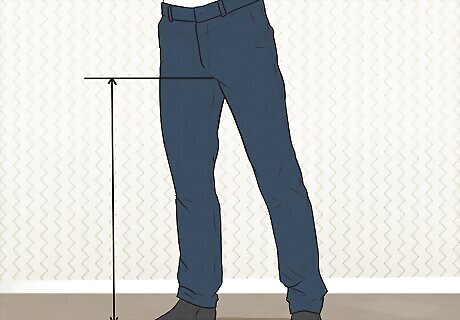
Measure from your groin to your lower ankle to get your inseam. The inseam will tell you what length to look for when you're buying pants. In order to get an accurate measurement, place the measuring tape as high on your inner thigh as you can. With the measuring tape flat against your leg, take the measurement the bottom of your ankle. Take this measurement with your shoes off. It can be helpful to ask someone to take this measurement for you. If you have trouble measuring yourself, try measuring the inseam of a pair of pants that fit you well.
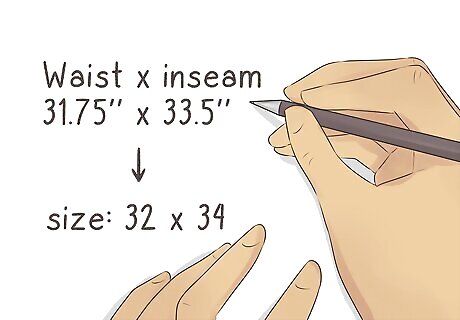
Convert your measurements to your size. Usually, your size will be your waist size followed by your inseam. It will look something like "32 x 34." Keep in mind that fabric can shrink after washing, especially with jeans and khakis. It's okay for pants to feel a little loose or look a little long when you first buy them.
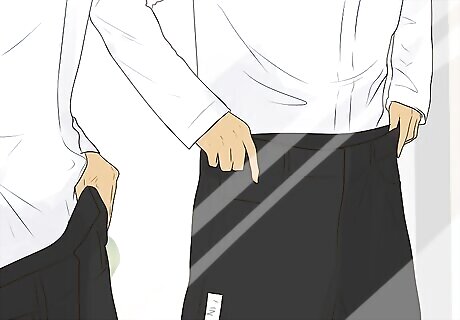
Try your pants on before you buy them. Even if you think you have the right size, try your pants on. They should feel snug, but not tight, around the waist and hit at the bottom of your ankle. Reading the size on the label will usually get you close to the right pair, but since pant size can vary slightly between brands and individual pairs, trying them on is still the most accurate way to determine if they fit. Finding the right size can take some trial and error. If the fit doesn't feel right, try sizing up or down.
Measuring for Women's Pants
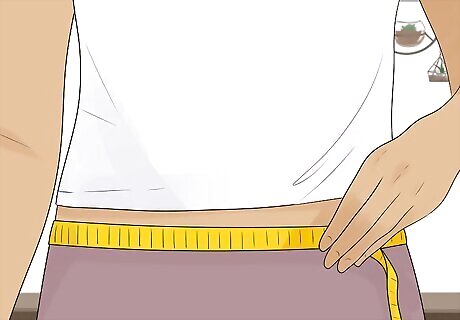
Measure your natural waist. Most of the time, you should measure your waist by wrapping a soft measuring tape around the narrowest part of your core, underneath the ribcage and above the bellybutton. Sometimes, brands will use a lower waist measurement, in which case, simply measure the part of your waist or hips where the pants will hit. You can buy a tailor's measuring tape at fabric stores, convenience stores, or department stores. How tight the measuring tape corresponds to how your pants will fit. If you pull the tape tight, your pants will fit tight. For a more relaxed fit, put a finger between your body and the measuring tape.
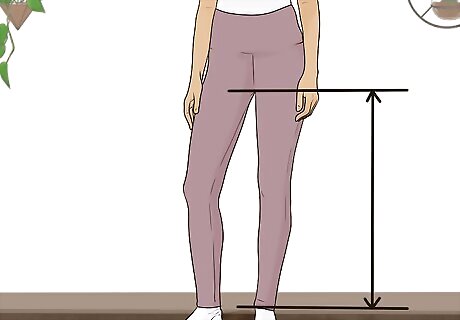
Take your inseam by measuring between your groin and ankle. The inseam refers to the length of the pants, and can change based on what kind of shoes you will wear with the pants. If you plan to wear flats, measure to just above where the shoe meets the ankle. Pants you wear with heels should fall to the middle of the shaft of the heel. In order to get this measurement, wear your heels while taking your inseam measurement. If you have trouble taking this measurement on yourself, try measuring the inseam of a pair of pants that fits you well.
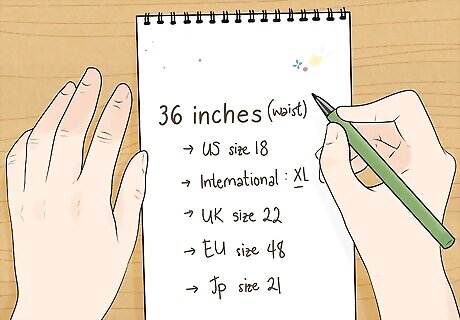
Convert your measurements into your size. Your size will vary depending on what country's size system you are shopping in and the clothing manufacturer. For example, a 26 inches (66 cm) waist is a standard US size 6, a UK size 10, or a French size 38. The best way to find your size in a particular brand is to compare your measurements to their size guide. Keep your measurements on hand in inches and centimeters, if you're not sure which system you'll need when shopping.
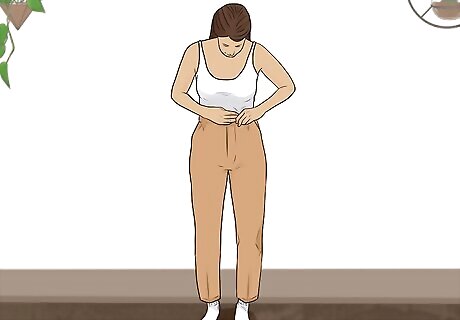
Try on pants before you buy them. Sizes can vary, even when you're buying two pairs of pants from the same brand. It can take some trial and error to find the right fit. Don't be afraid to try a size up or down from your "true" size.













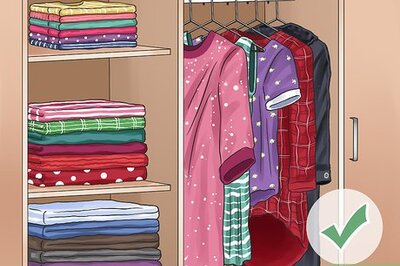




Comments
0 comment